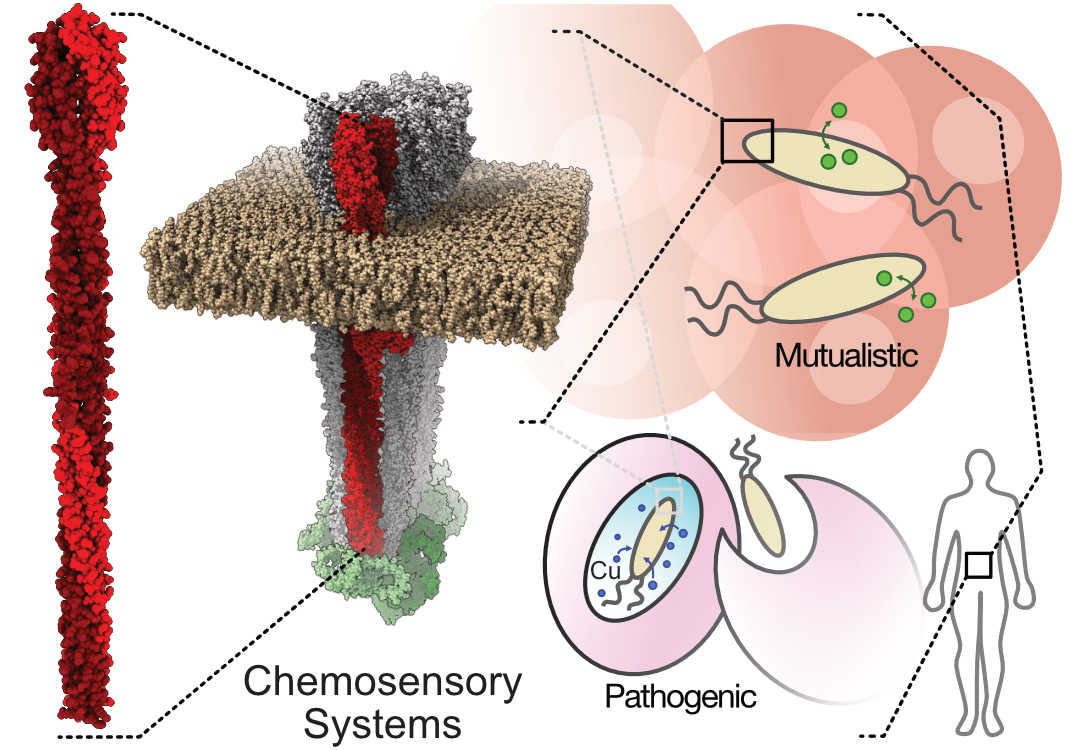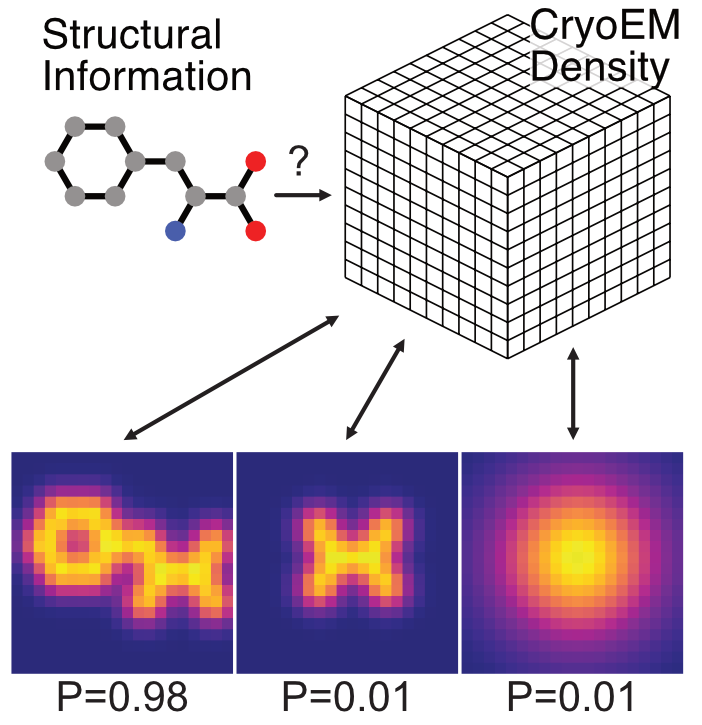Colin Kinz-Thompson
Biomolecular information: measuring it, extracting it, moving it
Abstract:
Both cells and scientists gather information about molecules—albeit from two very different length scales. In this talk, I will cover a vignette about each. First, how we can measure the biomolecular information content embedded into cryoEM data, and second, how the oligomerization dynamics of chemoreceptor proteins regulate transmembrane signaling of information into the cell. For the first vignette, the “resolution revolution” in cryoEM has enabled the field to access deep insight into the structures of biomolecular complexes. Assessing the quality of the biomolecular information embedded in a cryoEM density map, however, remains an unsolved problem. To address this theoretical shortcoming, we have developed a hierarchy of Rayleigh-like resolution criteria that follows the hierarchy of biomolecular structure. Biomolecular information content is then quantified by using probabilistic inference to determine which level of the hierarchy best captures the latent structure of the density map. I will discuss applications of hierarchical resolution to cryoEM and contextualize its performance relative to traditional resolution criterion measures of resolution. For the second vignette, I will discuss our efforts to understand how bacterial methyl-accepting chemotaxis proteins (MCP) engage in transmembrane signaling. MCPs are homodimers the bind small molecule ligands and signal to downstream processes to control, e.g., bacterial motility. Our recent investigations into how Cu(II) cations induce MCP protomer dimerization provide insight into how MCP dimerization ultimately modulates the transmembrane signaling of information across the bacterial membrane.
Speaker: Colin Kinz-Thompson, Rutgers University-Newark
Colin Kinz-Thompson is an Assistant Professor of Chemistry at Rutgers University-Newark. He graduated from the University of Rochester with a B.S. in Chemistry in 2010 where he worked with Esther Conwell studying charge transport in DNA. His graduate studies were at Columbia University where he graduated with a Ph.D. in Chemistry in 2016, and worked with Ruben Gonzalez, Jr. studying bacterial translation using single-molecule fluorescence resonance energy transfer (smFRET) and later studied secondary active transporters. Since beginning his independent career in Newark in 2020, his research has primarily focused on biophysical studies of bacterial receptors, and probabilistic inference-based analyses of smFRET and cryoEM data. He also is interested in developing stimuli-responsive transient polymer networks, and extracting biological insight from protein language models.
Host: Biophysics Graduate Student Association
Seminars start at 4:00 pm, and refreshments will be served at 3:45 pm.
This seminar will be held in room 3150 of the Physical Sciences Complex (Bldg #415).




